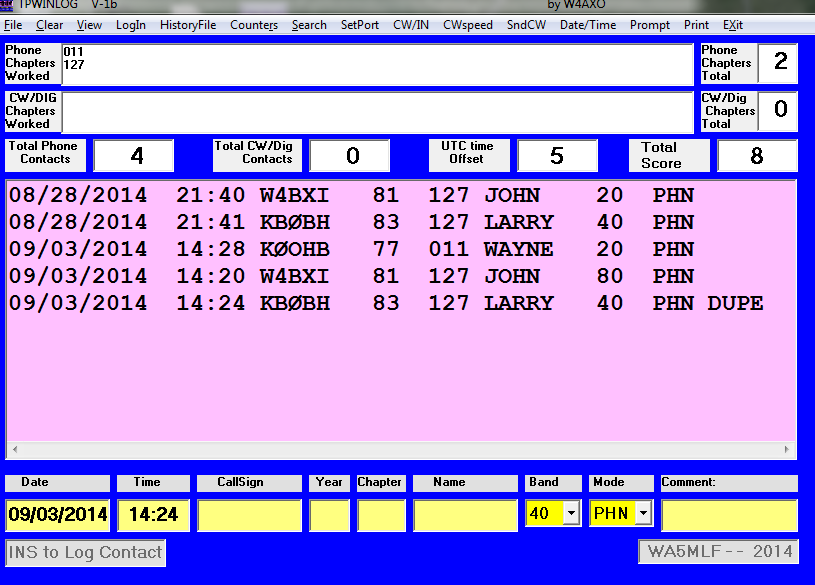During a morning HF roundtable QSO we discussed the ability to edit a log file created by
TPWINLOG. Section 7 of the program's
ReadMe file discuss the format of the log file.
A user may want to edit the log file in scenarios such as:
- Error (e.g. name or call sign) discovered just after a contact is logged
- Duplicate contact logged intentionally with DUPE tag for later correction
- Error in band or mode recognized and noted for correction while not operating the event
UPDATE 23 Oct 2020: In the most recent versions of the program the log file is named tpqsolog.txt. The instructions below are otherwise still valid.
After exiting the TPWINLOG program, during a break in operating or after the event concludes, you may use a plain text editor program (e.g. Notepad) to edit your log file QSOLOG5.TPQ. It would be prudent to first make a backup copy of the file. When editing the file, it is best to avoid changing the lengths of certain data elements: chapter, band, mode, date, time. The call sign, name, and comment fields will be of variable length. After editing QSOLOG5.TPQ, when you run TPWINLOG the contact log display and scoring will be updated to reflect the edits. Now you can run the Print feature to generate the output log report on paper or in a file for emailing.
Below is a series of screen shots showing a log of 5 practice log entries and an edit applied to one contact. (Click on any image to expand the view.) The first shows a 5th contact was identified by the program as a duplicate, but was accepted by the operator as a DUPE entry and is not counted in the tally of 4 contacts.

The next screen shows the
QSOLOG5.TPQ file opened in a plain text editor. In this example, the operator forgot to change the band to 80 m, but logged the contact as a dupe for later edit. He could have changed the band before Inserting (logging) the contact.
The next screen highlights the changes in the band and the comment field (removing the DUPE tag).
Finally, when the TPWINLOG program is re-started, the log screen reflects the revised tally of 5 contacts.
As noted previously, it's a good idea to practice using the program to log practice contacts and to print the log results. Just be sure to delete the practice contact log before CQ TP starts. See section 4.1 of the program's ReadMe file.




